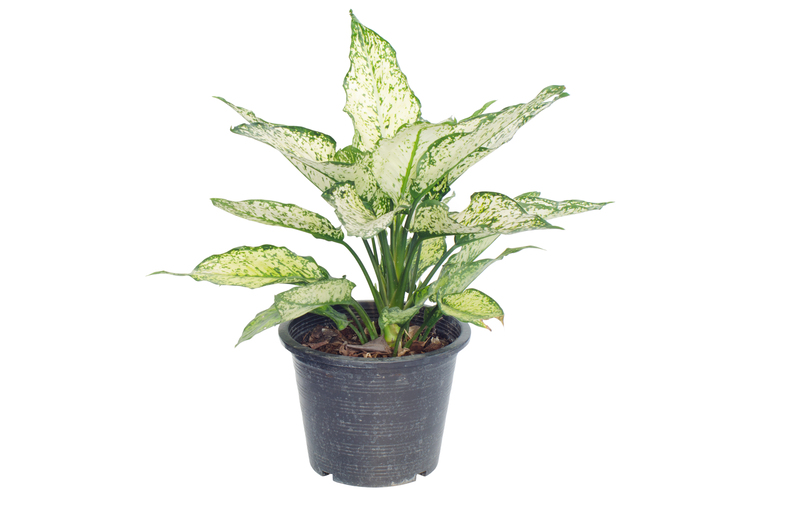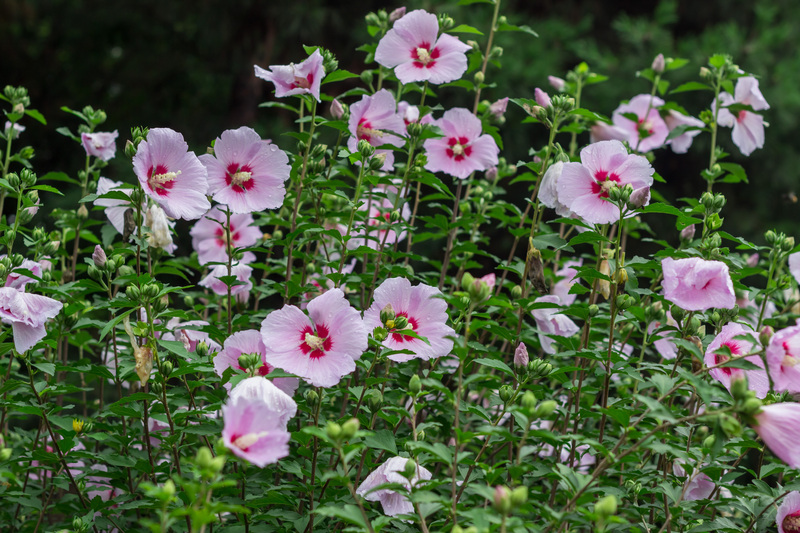Protecting Garden Plants: Master Winter's Harsh Elements
Posted on 29/05/2025
Protecting Garden Plants: Master Winter's Harsh Elements
Winter can be ruthless, subjecting your cherished garden plants to freezing temperatures, biting winds, and unpredictable moisture levels. Learning to shield your oasis from the cold ensures that your landscape emerges in spring full of vitality. In this extensive guide, we explore top strategies for protecting garden plants from winter weather, enabling you to become a true master of winter's harsh elements.

Why Protecting Garden Plants in Winter Matters
Each winter brings unique challenges for gardeners. From frost damage and dehydration to broken branches and lifeless roots, the risks are many. Without adequate protection, even the hardiest shrubs and perennials may suffer injuries that diminish their health, beauty, and productivity in the coming year.
- Prevent plant loss: Protecting plants saves you money and effort in spring renewal.
- Reduce disease and pest risks: Winter damage can make plants vulnerable to infestations.
- Preserve soil health: Adequate winter care helps maintain the microbial activity in your garden soil.
Mastering the art of winter plant protection ensures your investment in the garden survives the toughest season.
Understanding the Main Threats to Garden Plants During Winter
When temperatures plummet, your garden plants face several harsh elements. Recognizing these threats will help you choose the right protective strategies.
1. Frost and Freeze Damage
Frost forms when soil and plant surfaces cool rapidly, causing ice crystals to develop within the plant tissue. These can rupture cell walls and stunt growth or kill delicate species.
2. Desiccation (Winter Drying)
Cold winds can strip moisture from evergreen leaves and needles. With the ground frozen, plants cannot absorb more water, leading to winter burn and browning.
3. Snow and Ice Accumulation
Heavy snow or ice can break branches and crush stems, causing mechanical injuries that welcome disease.
4. Soil Heaving
Repeated freezing and thawing can force shallow-rooted plants out of the soil, leaving roots exposed and vulnerable.
5. Wildlife Damage
Hungry animals such as deer, rabbits, and voles are more likely to nibble on bark and tender shoots when food is scarce.
The Best Techniques for Protecting Your Garden Plants from Winter's Harsh Elements
With an understanding of winter's challenges, let's explore comprehensive strategies for protecting plants during winter:
1. Mulching: The First Line of Defense
Mulch acts as a blanket for plant roots, helping to moderate soil temperatures and retain moisture. It also minimizes soil heaving. Apply mulch after the first hard frost:
- Organic mulches: Straw, bark chips, shredded leaves, and pine needles are excellent choices.
- Application: Spread 2-4 inches of mulch around the base of plants, keeping away from trunks and crowns.
- Special care: For herbaceous perennials and roses, mound extra mulch over crowns for added insulation.
2. Creating Physical Barriers
Physical barriers protect plants from wind, snow, and browsing animals:
- Burlap screens: Wrap shrubs and small trees with burlap or set up windbreaks to shield plants from harsh winds.
- Wire cages: Surround tree trunks and vulnerable shrubs with hardware cloth or wire mesh to deter wildlife.
- Frost cloths and garden fleece: Drape fabric over plants during severe cold snaps. Remove during mild weather to prevent excess humidity.
3. Proper Watering Before Winter
Many winter issues arise from dehydration. Water your plants thoroughly before the ground freezes:
- Deep soak evergreens and new plantings: They lose moisture in winter and need reserves to ward off desiccation.
- Monitor fall weather: If autumn has been dry, supplementary watering becomes even more crucial.
4. Pruning and Staking
Trim dead or damaged branches in late autumn to minimize wind and snow damage. Staking young or top-heavy plants prevents breakage caused by heavy snow or ice.
5. Selecting the Right Plants for Your Climate
Choose species suited to your USDA Zone and microclimate. Hardy native plants often fare better against winter's harsh elements than tender exotics. If you must grow less hardy plants, prepare to give them extra winter protection.
Specific Winter Protection Tips for Different Types of Garden Plants
Every category of plant has unique needs for winter protection. Here's a breakdown by type:
Perennials
- Cut back after frost: Remove dead foliage after the first frost to prevent disease.
- Mulch deeply: Insulate roots and crowns for overwintering.
- Leave seed heads on some: Species like coneflowers provide habitat and winter interest.
Roses
- Hybrid teas and floribundas: Mound soil or mulch 8-12 inches high over crowns.
- Wrap with burlap: In especially harsh climates, wrap canes with burlap after mulching.
Evergreens
- Anti-desiccant sprays: Apply to broad-leaf evergreens to reduce winter drying.
- Water well in late fall: Moisture reserves prevent browning.
- Burlap windbreaks: Vital for young plants and exposed locations.
Young Trees and Shrubs
- Trunk wraps: Use plastic or paper trunk guards to prevent frost cracks and animal damage.
- Mulch root zones: Insulate against freeze-thaw cycles.
Bulbs and Annuals
- Insulate tender bulbs: Dig up and store indoors (like dahlias and gladiolus) or cover with extra mulch.
- Compost annuals: Remove after first hard frost; replant in spring.
Advanced Tactics to Master Winter Plant Protection
Using Cold Frames and Cloches
Cold frames and cloches act as mini-greenhouses, trapping heat and shielding tender plants. These are ideal for starting spring vegetables early, overwintering young seedlings, or protecting treasured ornamentals.
- DIY cold frames: Build using old windows or clear panels; position facing south.
- Cloches: Use glass, plastic, or repurposed containers over individual plants.
- Ventilation: Open frames on sunny days to prevent overheating and condensation.
Winter Watering on Milder Days
If winter thaws, water evergreens and new plantings on mild days, as long as the soil is not frozen. This reduces the risk of desiccation and helps plants stay hydrated through winter's harsh elements.
Anti-Desiccant Sprays
These polymer-based sprays coat foliage and reduce moisture loss. Apply anti-desiccants on a dry day above freezing, ideally in late fall and mid-winter for maximum protection.
Common Mistakes to Avoid When Protecting Garden Plants in Winter
- Applying mulch too early: Wait until the ground freezes to avoid attracting pests and diseases.
- Leaving covers on all winter: Remove or vent covers periodically to prevent mold and overheating during thaws.
- Improper watering: Don't neglect watering until the ground freezes completely.
- Ignoring drainage: Wet soil is more dangerous than dry; ensure good garden drainage before winter sets in.
Preparing Your Garden for Spring After Winter Protection
When winter recedes, your careful planning will pay off. Here are vital steps to help your garden transition into spring:
- Remove mulch gradually: Do so as the danger of frost passes, especially for early-sprouting perennials.
- Inspect and prune damage: Look for broken branches, frost cracks, and dead growth. Prune as needed to encourage healthy regrowth.
- Fertilize appropriately: Support plant recovery with slow-release or organic fertilizers.
- Replant annuals and tender bulbs: Replace or replant as soon as conditions allow.

Frequently Asked Questions About Protecting Garden Plants During Winter
Can I use plastic as a winter cover for my plants?
Plastic can retain too much moisture and cause overheating on sunny days. If used, keep it off the foliage and vent regularly, or prefer breathable fabrics like burlap or garden fleece.
Is it necessary to water outdoor plants in winter?
Yes! Especially for evergreens and newly planted trees or shrubs. Water prior to ground freeze and during moderate winter thaws if soil is dry.
Should I prune all my plants before winter?
Prune only dead or damaged wood in fall. Save hard pruning for late winter or early spring, when plant growth resumes.
How much mulch should I apply in winter?
Spread 2-4 inches around most plants. For tender perennials and roses, consider mounding 8-12 inches of mulch for extra insulation.
Conclusion: Mastering Winter's Harsh Elements for Healthy Garden Plants
Protecting garden plants from winter weather takes time, observation, and preparation. By mulching, providing windbreaks, watering effectively, and choosing resilient species, you can shield your garden from the toughest months. As you master these techniques, your plants will reward you each spring with renewed beauty and vigor.
Now is the time to act--prepare, protect, and enjoy a thriving landscape all year round!

